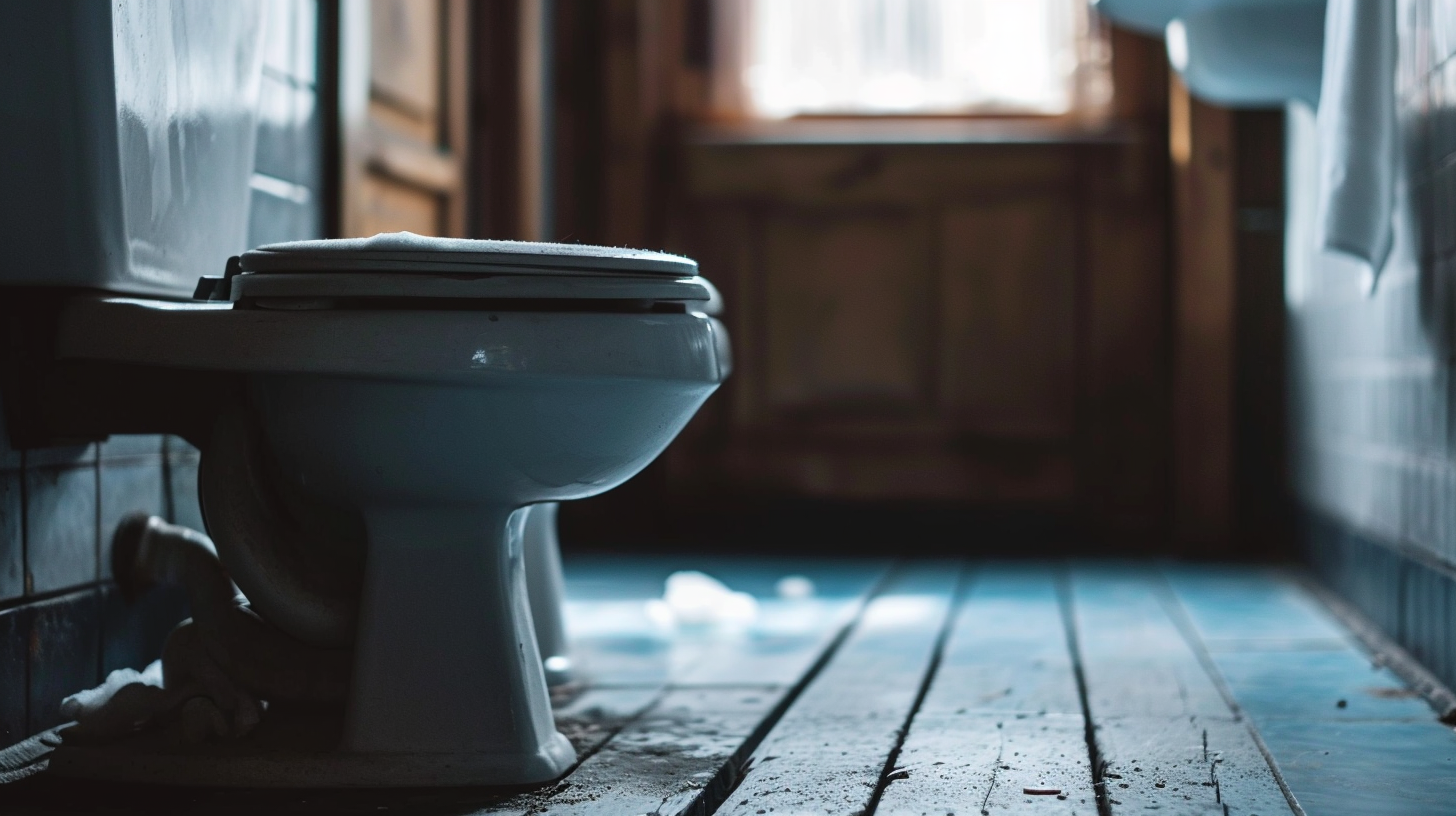Last Updated on 26th December 2023
Running toilets can be a frustrating and wasteful issue that many homeowners face. In this article, we will guide you through a step-by-step process to effectively repair a running toilet. By identifying the cause, shutting off the water supply, and inspecting and replacing faulty components such as the float and flapper valve, you can restore proper functioning. With our professional advice, you’ll be able to fix the problem and save water and money in no time.
Identifying the Cause of a Running Toilet
One common cause of a running toilet is a faulty flapper valve, which can lead to significant water wastage if not promptly identified and repaired. A flapper valve is responsible for regulating the flow of water from the toilet tank into the bowl. When the flapper valve fails to seal properly, water continuously leaks into the bowl, causing the toilet to constantly run. Troubleshooting a running toilet involves examining the flapper valve for any signs of damage or wear. Additionally, checking the water level in the tank, inspecting the fill valve, and ensuring the chain connecting the flapper to the flush handle is properly adjusted are essential steps in identifying the cause of a running toilet. By addressing common toilet problems like a faulty flapper valve, homeowners can save water and avoid unnecessary expenses.
Shutting Off the Water Supply to the Toilet
To initiate a discussion on the points related to shutting off the water supply to the toilet, it is essential to understand the importance of the water shut-off valve. The water shut-off valve is the key component that controls the flow of water to the toilet. However, if the valve is leaking or malfunctioning, it can cause further issues and complications.
Water Shut-Off Valve
The proper functioning of the water shut-off valve is crucial for effectively managing the water supply to the toilet. The water shut-off valve is responsible for controlling the flow of water to the toilet, allowing users to turn off the water when necessary, such as during repairs or maintenance. It is important to check the water shut-off valve regularly to ensure it is in good working condition. If the valve is faulty, it may result in water leakage, reduced water pressure, or even a complete water supply shut-off. To repair a faulty water shut-off valve, various plumbing tools can be used, including a wrench, pliers, or a valve repair kit. Regular maintenance and prompt repair of the water shut-off valve can help prevent water wastage and ensure the proper functioning of the toilet.
What if Leaking?
If leaking occurs, it is imperative to promptly shut off the water supply to the toilet to prevent further damage and water wastage. Common causes of toilet leaks include a faulty flapper, a worn-out fill valve, or a damaged tank. To fix a leaking toilet, start by inspecting the flapper. If it is worn or damaged, replace it with a new one. Similarly, if the fill valve is not functioning properly, it may need to be replaced. Another potential cause of a leaking toilet is a cracked or damaged tank. In this case, the tank may need to be replaced entirely. It is important to address toilet leaks promptly to avoid water damage and excessive water usage, which can lead to higher utility bills.
Checking and Adjusting the Float
An essential step in resolving a running toilet is checking and adjusting the float to ensure proper water level regulation. The float is a small device that controls the water level inside the toilet tank. If the float is not adjusted correctly, it can cause the toilet to continuously run, wasting water and increasing your water bill. To troubleshoot this issue, start by lifting the lid of the toilet tank and locating the float. It is usually a ball or a cylinder attached to an arm. Make sure the float is not submerged in water and adjust it to the recommended water level by bending the float arm or adjusting the screw. This simple float adjustment can often solve the problem of a running toilet and prevent further water wastage.
Inspecting and Replacing the Flapper Valve
How can you inspect and replace the flapper valve to fix a running toilet, and why is it an important step in resolving this issue? Troubleshooting the flapper valve is crucial in addressing a running toilet. The flapper valve is responsible for controlling the water flow from the tank into the bowl. Over time, it can become worn out or damaged, leading to water leakage and a constantly running toilet. To inspect the flapper valve, start by turning off the water supply to the toilet and flushing it to drain the tank. Carefully remove the old flapper valve and replace it with a new one, ensuring a proper fit. This simple step can effectively resolve the running toilet issue, saving water and preventing potential water damage. Regularly inspecting and replacing the flapper valve is essential for maintaining a properly functioning toilet.
Fixing a Leaky Fill Valve
If you notice that your toilet tank is constantly running or leaking, the fill valve may be the culprit. Fixing a leaky fill valve is a relatively simple task that can save you money on your water bill and prevent further damage to your toilet. In this discussion, we will explore some common troubleshooting steps for fill valves and discuss the proper installation techniques to ensure a leak-free toilet.
Fill Valve Troubleshooting
To troubleshoot a fill valve, start by shutting off the water supply and then inspecting the valve for any leaks or blockages. Proper fill valve maintenance is essential for the efficient functioning of a toilet. Common fill valve issues include constant running or trickling water, slow filling or no filling at all, and noisy operation. If you notice any of these problems, it is important to address them promptly to prevent water waste and potential damage to your toilet. Begin by checking for any leaks around the valve or water supply line. If you find any, tighten the connections or replace any worn-out parts. Next, ensure that the valve is not blocked by debris or mineral deposits. Clean or replace the fill valve if necessary. Remember, regular maintenance and timely troubleshooting can help keep your fill valve in good working condition and prevent costly repairs.
Proper Fill Valve Installation
The importance of proper fill valve installation cannot be overstated as it ensures the efficient and leak-free functioning of a toilet. Fill valve maintenance plays a crucial role in preventing common issues such as constant running or inadequate water levels in the toilet tank. When it comes to troubleshooting fill valve issues, it is essential to start with proper installation. This includes ensuring the valve is securely attached to the water supply line and the tank is properly sealed to prevent leaks. Additionally, regular maintenance such as cleaning and inspecting the fill valve for any damage or wear can help identify and resolve issues before they worsen. By following proper fill valve installation and maintenance procedures, homeowners can ensure their toilets operate smoothly and efficiently.
Adjusting the Water Level in the Toilet Tank
Proper adjustment of the water level in the toilet tank is crucial for ensuring optimal flushing performance and preventing water waste. One common issue with toilet tanks is a constantly running toilet, which often occurs due to an incorrect water level. To troubleshoot the water level, it is important to start by adjusting the float correctly. The float is responsible for controlling the water level in the tank. If the water level is too high, it can lead to continuous water flow into the overflow tube, causing the toilet to run constantly. To adjust the float, locate the adjustment screw or clip and adjust it accordingly until the water level reaches the recommended mark on the overflow pipe. By adjusting the float correctly, you can solve the issue of a running toilet and prevent any unnecessary water waste.
Cleaning or Replacing the Overflow Tube
Regular maintenance of the overflow tube, such as cleaning or replacing it, is essential to prevent water leakage and maintain the optimal functionality of the toilet. The overflow tube is a crucial component in the toilet system that helps regulate water levels and prevent overflow. Over time, the tube can become clogged with debris or worn out, leading to common issues like a running toilet. Cleaning techniques for the overflow tube involve using a small brush or pipe cleaner to remove any buildup or blockages. If the tube is severely damaged or corroded, it may need to be replaced entirely. Regularly checking and maintaining the overflow tube can save homeowners from costly water damage and ensure the proper functioning of their toilets.
Testing and Ensuring Proper Functioning of the Repaired Toilet
To ensure the repaired toilet is functioning properly, conduct a thorough test of its flush mechanism and water flow. Testing methods play an essential role in determining if the repair work has been successful. Start by checking the flush mechanism. Flush the toilet multiple times to ensure it flushes smoothly and efficiently. Pay attention to any unusual sounds or delays in the flushing process. Additionally, test the water flow. Make sure the water fills up the tank and bowl adequately after each flush. Adjust the water level if necessary. If the repaired toilet passes these tests, it should be functioning properly. Remember to follow maintenance tips to keep the toilet in good condition, such as regularly cleaning the tank and checking for leaks.




